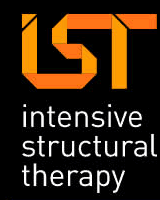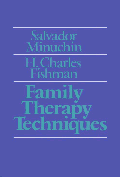Introduction to Intensive Structural Therapy
Intensive Structural Therapy (IST) is a powerful, positive model of psychotherapy that sees a person’s presenting problem as being maintained by their current social context. By restructuring and recontextualizing family systems, therapists can profoundly change the way families function. In doing so, we transform the selves of individual family members.
IST sees people as multifaceted – as Walt Whitman said: "I am large, and I contain multitudes".
Every individual has the capacity to overcome their problems – they have within themselves different, more functional facets. Indeed, the immediate social context calls forth problematic facets of the persons self. To the extent that the context changes, different, more functional facets of the self are expressed.
Background of the IST model
Intensive Structural Therapy is a model of systemic therapy evolved from structural family therapy. Structural family therapy, developed by Salvador Minuchin, M.D., emanated out of the early work at Wiltwick School for Boys. This reform school outside of New York City had some of the most difficult and recidivistic young people sent there by the courts. The work of this project is described in a book Families of the Slums, where the principals, Salvador Minuchin, Bernice Rossman, Braulio Montalvo, Bernard Guerney, Jr., and Florence Schumer were able to find consistent patterns in the families of these young people.
The model was then applied to work with children with anorexia and other diseases such as diabetes and asthma. In their book Psychosomatic Families (Minuchin, Rossman and Baker), they were able to identify specific family interactional patterns that maintained the problems that anorectic children manifested. Psychosomatic Families shows that after one to seven years follow up, 86% of the children treated with this model were doing well in terms of symptomatology and psychosocial functioning.
Glossary of Terms
- Circularity
- The view that causality must be understood as occurring within a relationship context and by means of a network of interacting loops.

- Congruent system
- All of the social forces in the young person’s life are in agreement and convey the same message.
- Contempory Context
- The people living presently in the young person’s context who are influential.
- Homeostasis
- The maintenance of constant steady, state. The mobilisation and utilisation of energy to maintain integration in a stress situation.
- Homeostatic maintainer (HM)
- The individual/s who, when the system is threatened with changing, activate to return the system to the status-quo. The HM can also be an interactional pattern such as conflict avoidance.
- Intensive Structural Therapy
- Based on Structural Family Theory, IST assesses and transforms the individual’s contemporary context. It is intensive because it intervenes focused on the homeostatic maintainer.
- Theory of change
- The underlying postulates on which a therapeutic model is based.
- Isomorphic
- The same pattern in different contexts eg; parents rescuing a trouble-making youngster and social service rescuing him.
- Complementary sequences
- Reciprocal and fitting patterns such as a teacher and a student.
- Symmetrical sequences
- Behaviour is mirrored by the same behaviour eg: a tennis match. The opposite of complementary sequences.
- Complementarity
- The yin and yang of systems. Everything is connected. ( see circularity above)
Family Therapy Techniques
In 1981, Charles Fishman co-authored Family Therapy Techniques with Salvador Minuchin (Harvard, 1981).
The book provides the basic skills and techniques to be a skillful Intensive Structural Family Therapist, and has become a classic in the field of family therapy training.
Intensive Structural Therapy
Intensive Structural Therapy differs from the Structural Family Therapy in two ways. Over the years, Dr Fishman came to see a need for the Structural Family Therapy model to be broadened to address resources in the patient’s contemporary context to create and maintain change. In addition, he became aware of an important facet of systems – that there are forces that maintain the problematic status quo. He calls this assessment tool the Homeostatic Maintainer (HM). The use of the HM concept allows the clinician to direct treatment incisively.
Fishman’s book Treating Troubled Adolescents: A Family Therapy Approach (Basic Books, 1988) applies the principles of IST to a the difficult problem of troubled adolescents. This practical book provides help to the clinician in areas such as delinquency, sucidality, runaways and work with the parents.
more about the book Treating Troubled Adolescents
Intensive Structural Therapy: Treating Families in their Social Context (Basic Books, 1993) elaborates on the IST model. It provides a 5-step protocol to working with a variety of contexts: the work place, legal, work with siblings and peers, hospitals and social services systems.
more about the book Intensive Structural Therapy
Enduring Change in Eating Disorders
The most recent application of this treatment mode is published in Fishman’s 2004 book Enduring Change in Eating Disorders: Interventions with long-term results. Building on the theory and techniques of the previous books, Fishman supports the effectiveness of the model by presenting qualitative data for individuals with severe eating disorders. This book provides a unique perspective on the successful treatment of one of the most debilitating of psychiatric disorders.
more about the book Enduring Change in Eating Disorders



